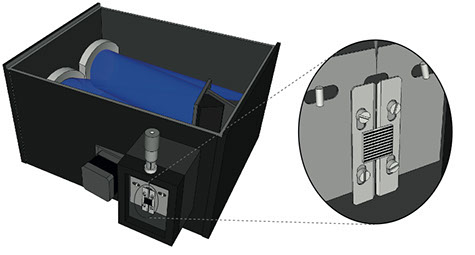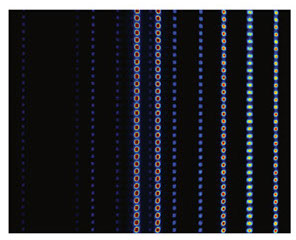
A well-known problem in spectroscopy is the creation of stray light, which is a general term, comprising all undesired light being detected. Stray light-detection leads to e.g. analytical biases, calibration errors, worsened detection limits, concealment of weak spectral features, resolution losses, etc.
To solve the stray light issue, we have developed, together with our colleague Andreas Ehn from the Division of combustion Physics, a technique called Periodic Shadowing. The technique is both very simple and inexpensive, and is based on placing a transmission grating by the entrance of the spectrometer (see figure above). The purpose of this grating is to "tag" the incoming light with a unique spatial code - in this case a periodic code. The light that travels the correct path through the spectrometer will carry this superimposed spatial code, whereas photons that diverted from it - stray light - will not. By applying a frequency sensitive algorithm on the detected image (see image to the right) one can reject the unwanted stray light contribution.

The graph below shows an example of a spectrum recorded using either conventional spectroscopic equipment or Periodic Shadowing. Note the logarithmic intensity scale. The example shows how Periodic Shadowing improves both the spectral contrast as well as the signal-to-background (by a factor of 100).

- E. Kristensson, A. Ehn and E. Berrocal, High dynamic spectroscopy using a digital micromirror device and periodic shadowing, Opt. Express, 25, 212-222, 2017.
- E. Kristensson and A. Ehn, Improved spectral sensitivity by combining Periodic Shadowing and High Dynamic Range imaging, Spectroscopy Letters, 49, 91-95, 2015.
- E. Kristensson, J. Bood, M. Aldén, E. Nordström, J. Jhu, S. Huldt, P-E. Bengtsson, H. Nilsson, E. Berrocal and A. Ehn, Stray light suppression in spectroscopy using periodic shadowing, Opt. Express, 22, 7711-7721, 2014.


